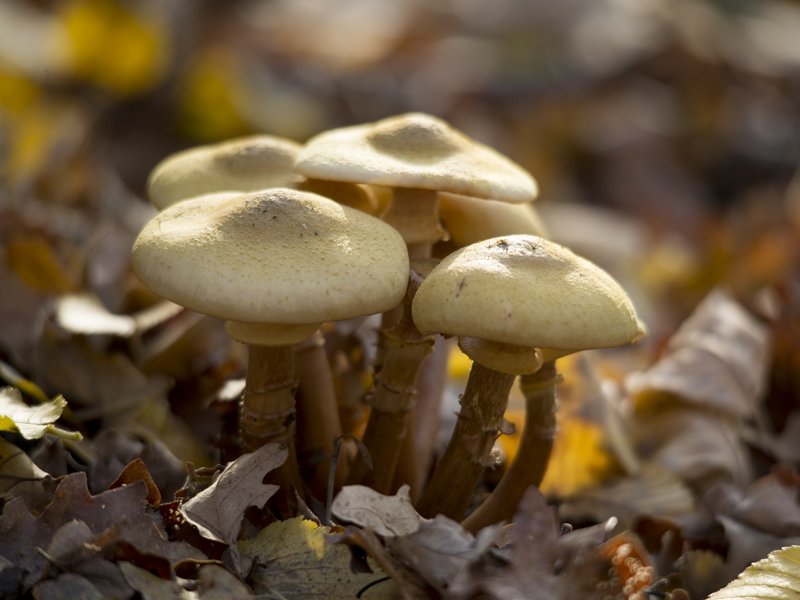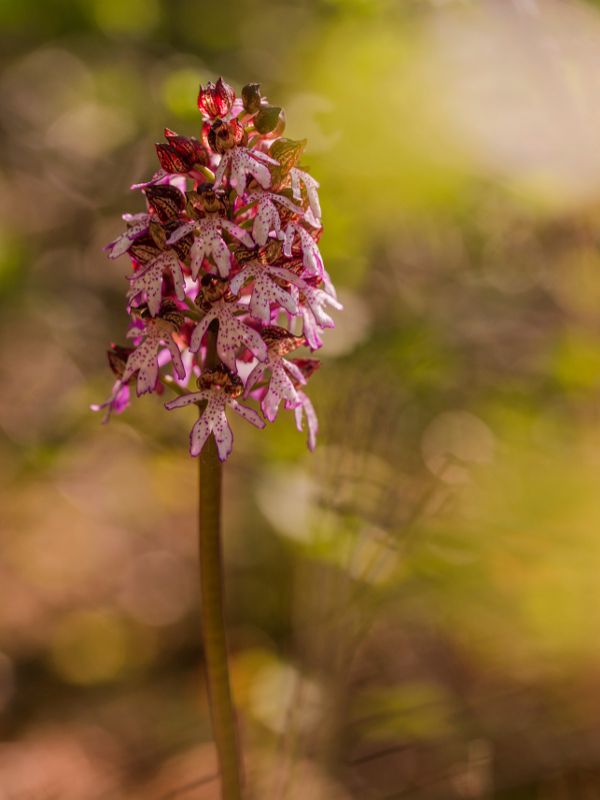Home » Nature and Territory » Parco Storico Regionale di Monte Sole » Protected Area
Flora and Vegetation
According to a recent survey it results that 936 flower species are present within the Park. Considering that regional flora numbers about 2,700 species, it is plain that one-third of the flower varieties of the whole Emilia-Romagna are present in the Park. Vegetation in this area mainly depends on Park's geographic position: It borders the mediterranean climatic area and it is influenced by the continental climate typical of the central Emilia at the same time.
These two situations, so different one from the other, are at the origin of the coexistence within the area of the holly oak (Steno-Mediterranean), here in its westernmost stands within the region, and the Scots pine (Eurasian), for which Mount Termine represents the southern boundary of its range.
The area's physical geography is another factor affecting variability in the floristic component: the steep slopes, with their differing aspects, host a rich floristic ensemble that varies according to the composition of the bedrock (ranging from arenaceous to marly and clayey); the deep gorges are inhabited by microtherms and the gentle slopes by grasses and small shrub species that have adapted to milder temperatures.
Also, the altitude range creates the conditions for the presence of the European beech (Fagus sylvatica), a species normally inhabiting higher altitudes, along the northern inclines of the higher points within the park. In general, the northern slopes are covered in forests dominated by the European hop hornbeam, whereas the southern slopes support pubescent oak forests. There are numerous chestnut forests, especially on the acidic soils within the southern regions of the park; in the past they were cultivated extensively for flour milling purposes.
The chestnut forest brings us back to the subject of how anthropization of the area has impacted on its floristic composition. Actually, at Monte Sole, it would be more accurate to speak of de-anthropization. In fact, the centuries-long (or millennium-long, if you consider the Etruscan settlements at Misa) presence of man and his activities were abruptly interrupted by the tragic events that took place here, the memory of which the park, instituted by regional law, endeavors to preserve and pass on to future generations. The evolution of man's impact was effectively arrested on the eve of the last great agronomic restructurings/revolutions, that is, at a time when the economic activities relating to the use of the natural resources were still largely "sustainable" by the environment in which they were situated.
The end of the presence of human activities at Monte Sole resulted in the emergence of renaturization processes, which are rather widespread within the park. However, even where man continued to work the land and raise livestock, large areas remained where species that were not agronomically significant (or considered weeds) could freely grow and spread, resulting in the presence of numerous plants at Monte Sole, such as the cornflower (Centaurea cyanus) or the larkspur (Consolida spp), that are difficult to find elsewhere due to the use of herbicides.
2024 © Ente di gestione per i Parchi e la Biodiversità - Emilia Orientale
Piazza XX Settembre, 1 - 40043 Marzabotto (BO)
Tel. +39 051 6701260-6254811 - Fax +39 051 6254521
E-mail protocollo@enteparchi.bo.it - PEC enteparchibo@cert.provincia.bo.it
P.IVA CF 03171551207
Codice univoco per la fatturazione elettronica: UF2KK4
E-mail protocollo@enteparchi.bo.it - PEC enteparchibo@cert.provincia.bo.it
P.IVA CF 03171551207
Codice univoco per la fatturazione elettronica: UF2KK4
Privacy | Dichiarazione di accessibilità




